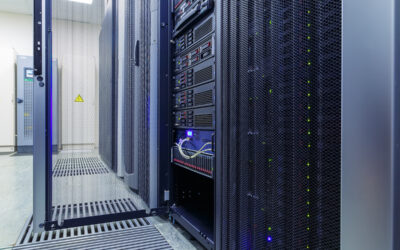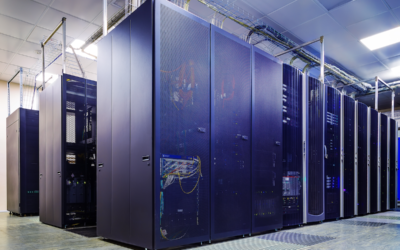Different Data Center Cooling Techniques and How They Can Be Complementary15 min read

Data center cooling is one of the most important aspects of data center design and operation. With the increasing density of IT equipment, it is more important than ever to choose the right cooling solution to meet the specific needs of your data center.
As IT equipment manufacturers turn to liquid cooling to remove heat, many components in the data center will remain air-cooled for years to come. It is unlikely that difficult air cooling will disappear completely, but it is likely to diminish gradually over the next few decades. As liquid cooling and other more efficient cooling technologies become more widespread and cost-effective, more and more data centers will switch to these technologies and operate various arrangements of hybrid cooling.
So how should you effectively operate a hybrid facility to maximize the benefit of both air and liquid cooling?
Liquid Cooling is on the Rise
Some believe we will eventually reach a point when all cabinets are cooled with liquid. But even in those data centers that reach the point where they are almost completely cooled by liquid, there is still the fact that liquid cooling dissipates heat into a room. That heat needs to be removed via air cooling. It is estimated that even the most state-of-the-art liquid cooled data centers will need at least 20% to 30% air cooling for their facilities.
There is also the cost to consider. High-density racks and expensive, GPU-based hardware running AI applications certainly merit the expense of liquid cooling. But regular data center racks of modest density can be kept cool with traditional air cooling.
Over time, more and more racks will transition to liquid cooling – either in whole or in part as a hybrid air/liquid combo.
There is no doubt that liquid cooling technology will evolve, mature – and become less expensive. Thus, it is destined to eventually dominate. It will become harder for data centers to remain as primarily air-cooled facilities. In fact, many server and rack manufacturers are likely to embed liquid into their offerings to speed the transition.
But there is no possibility of anyone achieving a 100% liquid cooled data center, except perhaps in a sophisticated lab environment that would only ever be for show. It is a case of simple thermodynamics. Heat gets transferred to liquid, is dissipated into the surrounding space and that heat needs to be removed via air cooling.
Hybrid Emerges
Hybrid facilities, then, are the future. Those running them will tread a fine balance between liquid and air based on equipment needs, performance, cost and potential revenues. Each cooling technology has its pros and cons. They are complementary.
Hybrid needs to be viewed in a multi-faceted way. There will be, of course, hybrid facilities that are cooled by both liquid and air. But there will also be hybrid racks and hybrid servers. Rear door heat exchangers are an example of hybrid racks. By adding doors that contain chilled water that fit onto the back of an otherwise air-cooled rack, hybrid rack cooling becomes possible.
Efficiency Matters
Some may rush headlong into liquid cooling. But a liquid cooled data center can turn out to be an expensive waste of money if the facility itself is inefficient. The basics of air cooling and power usage effectiveness (PUE) must be applied to maximize the investment in air cooling.
That means:
- Separating the supply air from the exhaust air.
- Ensuring the fans, cooling coils, chiller and other components used in CRAC and CRAH units are running optimally. Consider upgrades to increase efficiency and lower costs.
- Investigate air flows throughout the data center. Ensure cold air flows where it is most needed and hot air is properly contained and channeled.
- Aisle containment systems, floor tiles, blanking panels and various sealing solutions should be liberally used to prevent air from escaping.
One investigation revealed that a single CRAH chiller was wasting $190,000 a year due to inefficiency. The cooling infrastructure load was eventually reduced by 20% simply by calibrating water value position sensors, chiller water pumps and chiller set points. Despite those gains, the facility had not been fully optimized. By implementing containment, the cooling load could have been further lowered.
The future, therefore, may be liquid. But it will be accompanied by air cooling as part of hybrid cooled data centers
The industry's easiest to install containment!
AisleLok® solutions are designed to enhance airflow management,
improve cooling efficiency and reduce energy costs.
The industry's easiest to install containment!
AisleLok® solutions are designed to enhance airflow management,
improve cooling efficiency and reduce energy costs.







0 Comments